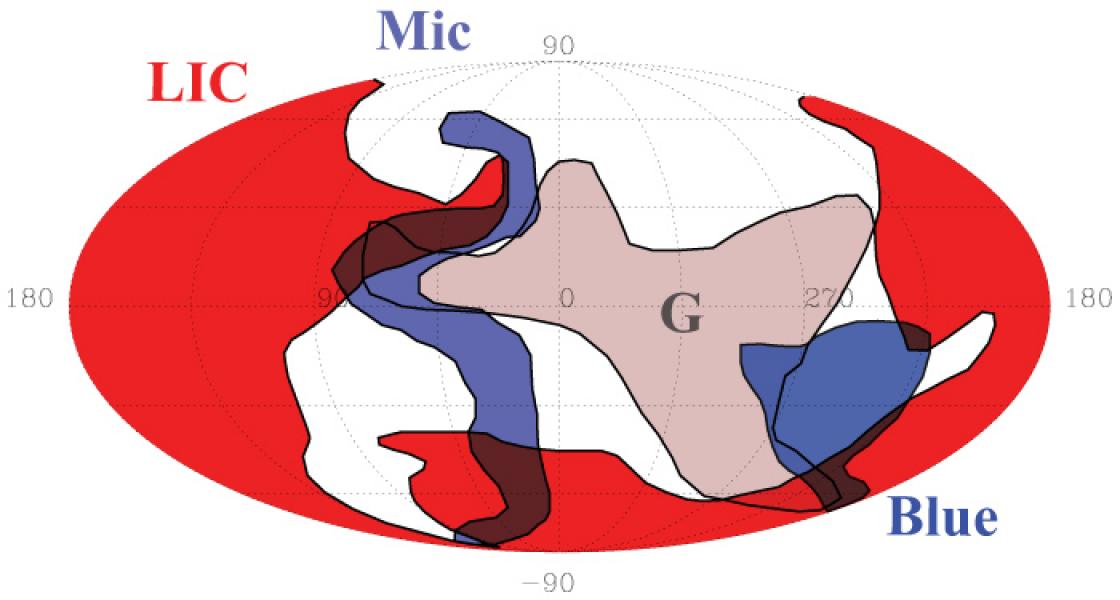Our solar system is currently sprinting around the center of the Milky Way at a speed of 26 km/sec. But, we’re not just hurtling through empty space, according to Fellow Jeff Linsky and former graduate student Seth Redfield (now assistant professor of astronomy at Wesleyan University). We’re surrounded by 15 "nearby" clouds of warm gas, all within 50 light years of the Sun. Three of the nearest ones are shown in the figure. Together, the Local Interstellar Cloud (LIC) and G clouds cover 70% of the sky. Linsky says that a collision between the two massive clouds is likely responsible for the filamentary shape of the Mic cloud, which is being squished between them.
These turbulent clouds were formed several million years ago by the winds from young, massive stars and supernova explosions in the Scorpio-Centaurus Association. Earth has already flown through at least one of these clouds — and countless others like them during our solar system’s cosmic journey around the Galaxy during the past four billion years.
At the moment, we are between clouds. The solar system has "just" left the LIC, which got its name because astronomers once believed we were still inside it. We’re now on a collision course with the G cloud, which stands between us and the galactic center. Linsky says we’ll enter the G cloud in less than 5,000 years — perhaps even tomorrow. Once that happens, there’s a chance the G cloud will affect the Sun’s solar wind and Earth’s climate.
For instance, a dense enough cloud could push in on the solar wind and pollute the interplanetary medium, decreasing the Sun’s intensity and cooling the Earth. A very dense cloud could even produce an ice age on the Earth. Luckily, the G cloud isn’t dense enough to cause an ice age. It would only cool the earth a little relative to the environment we’re in now. Still, Linsky says, it’s only a matter of time until we encounter a cloud that is dense enough to radically alter our climate.
Until then, however, there is a lot to learn about the clouds currently flowing through the heavens around us. For instance, Linsky would like to know more about their structure and whether they are uniformly filled with gas. He’d like to understand how clouds interact. He’d also like to figure out how starbursts create the gas flows that give rise to interstellar clouds. These and many other questions should keep him and his colleagues busy for a long time. - Julie Phillips




